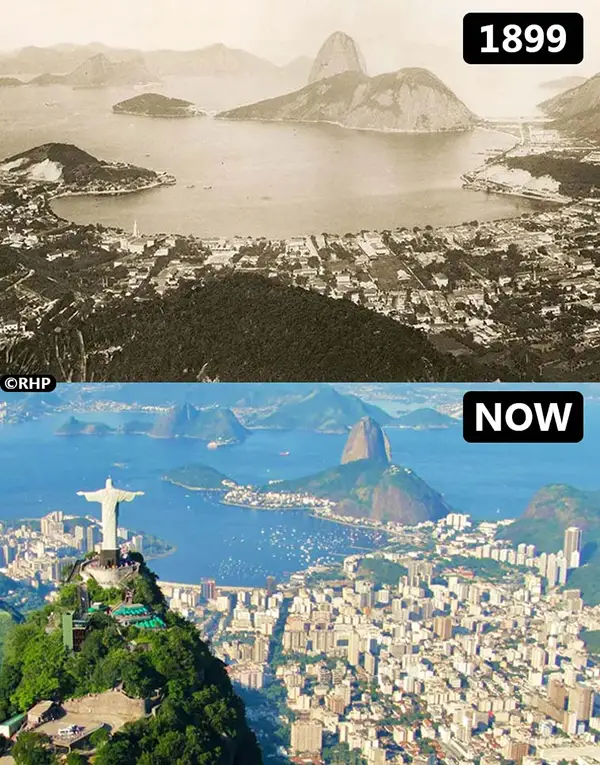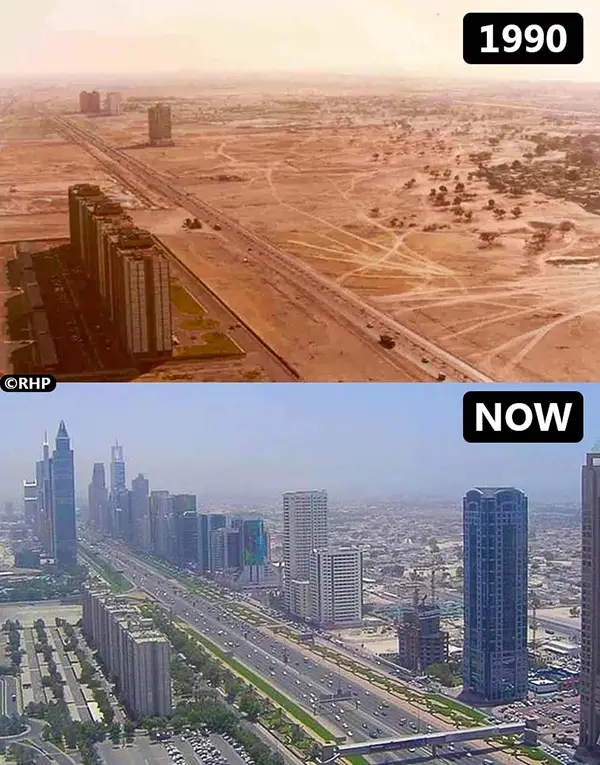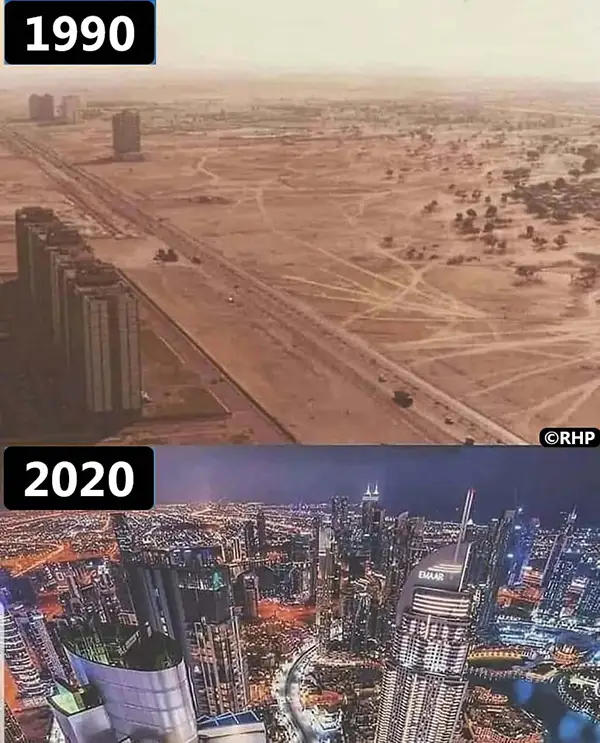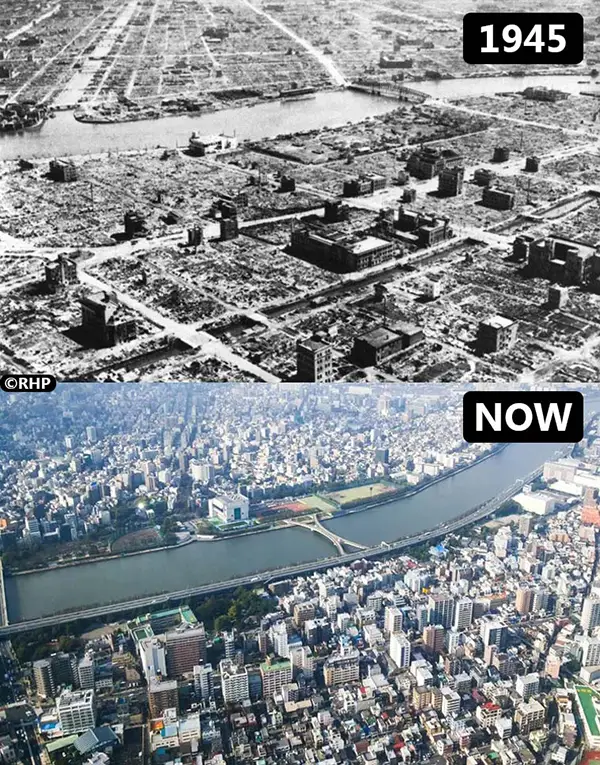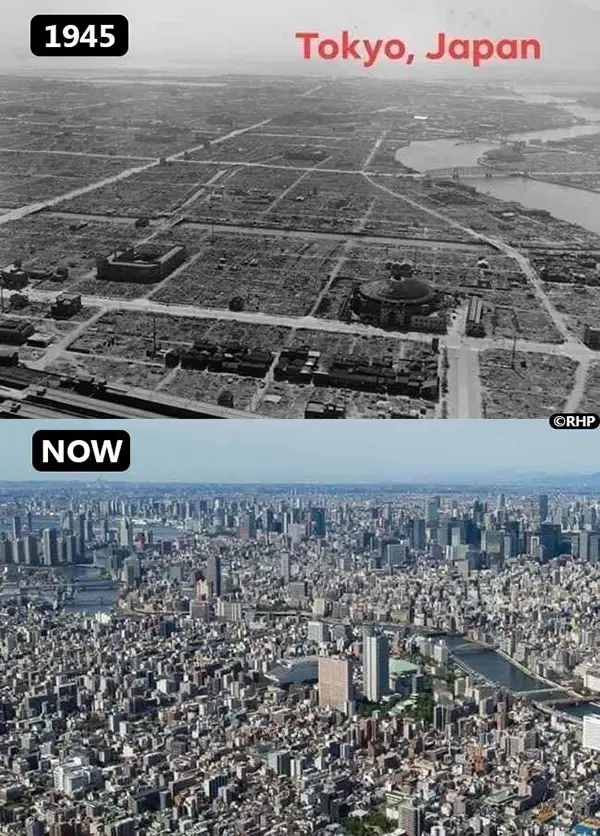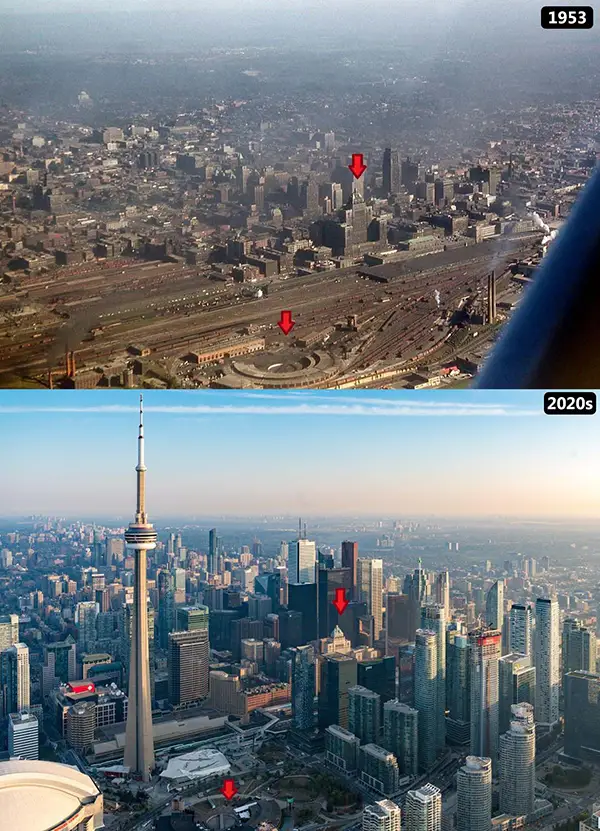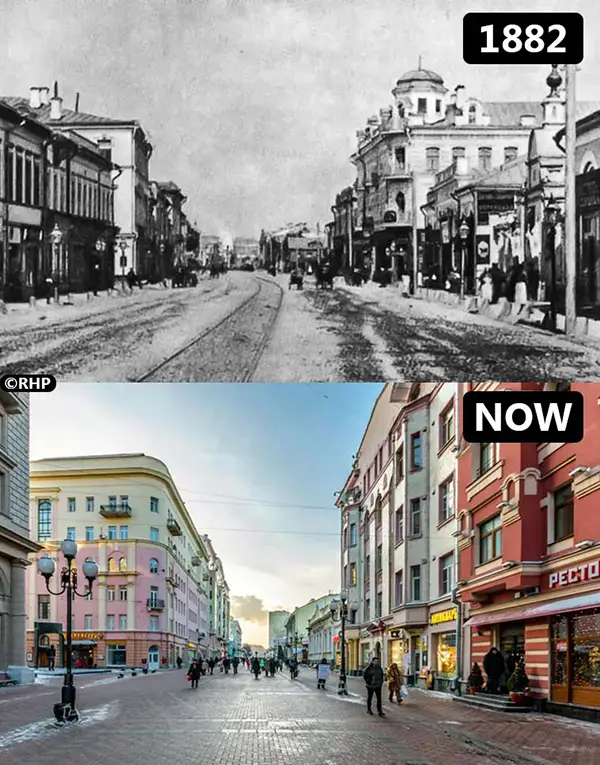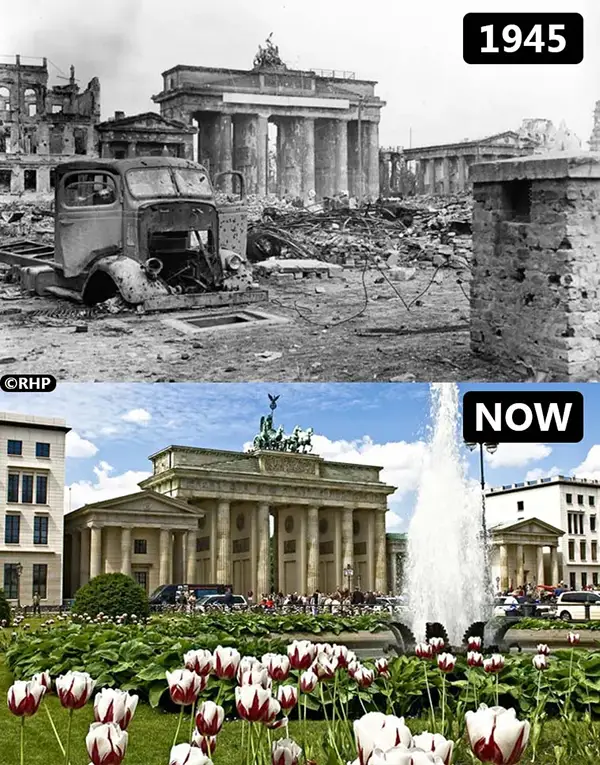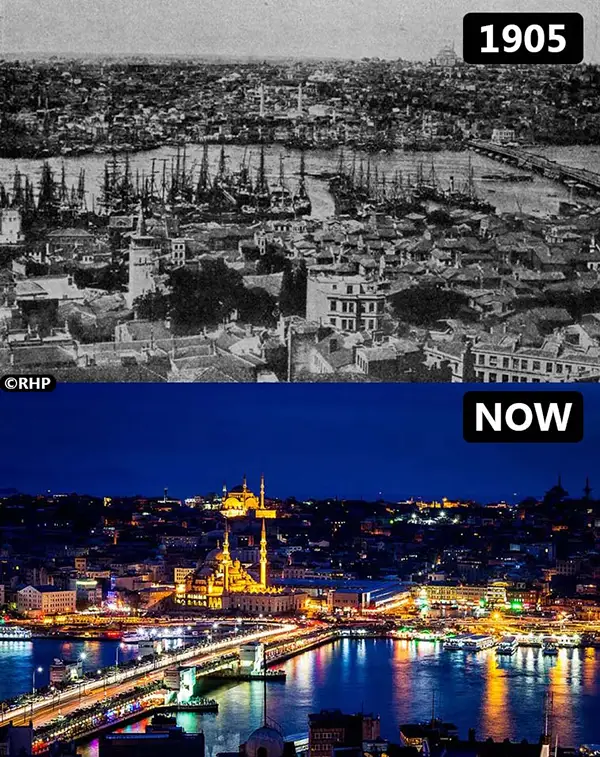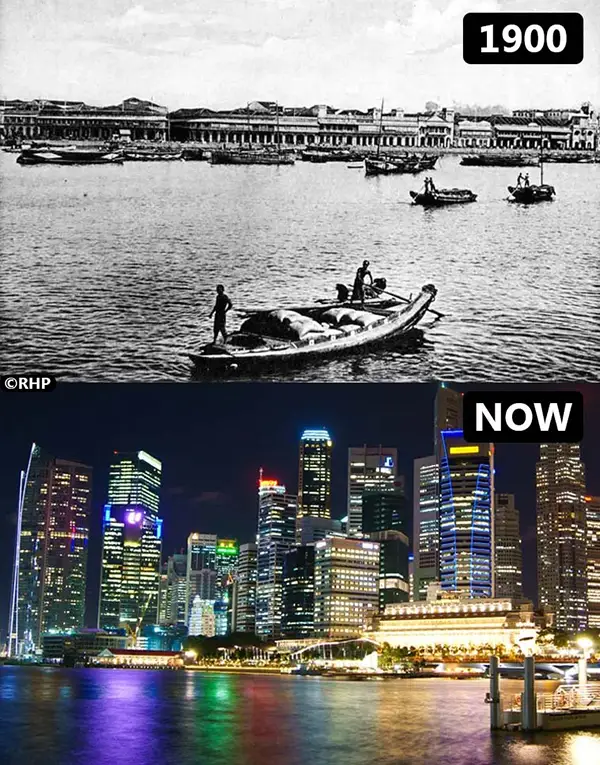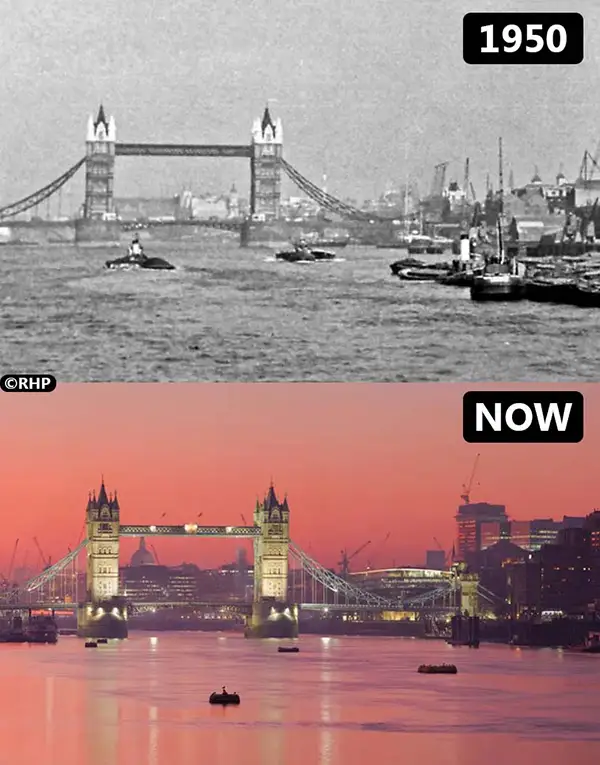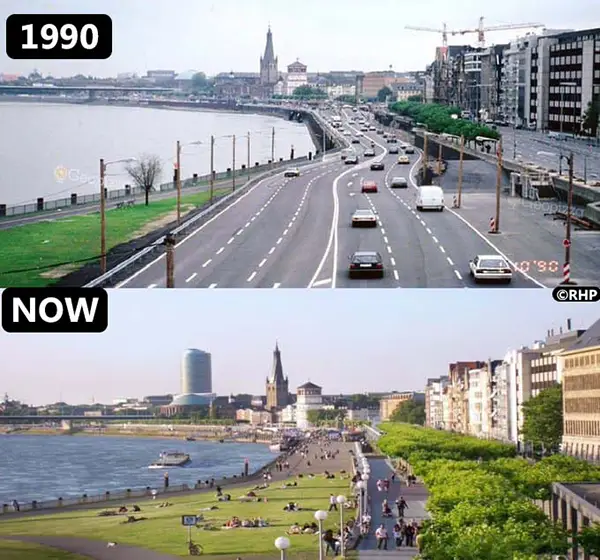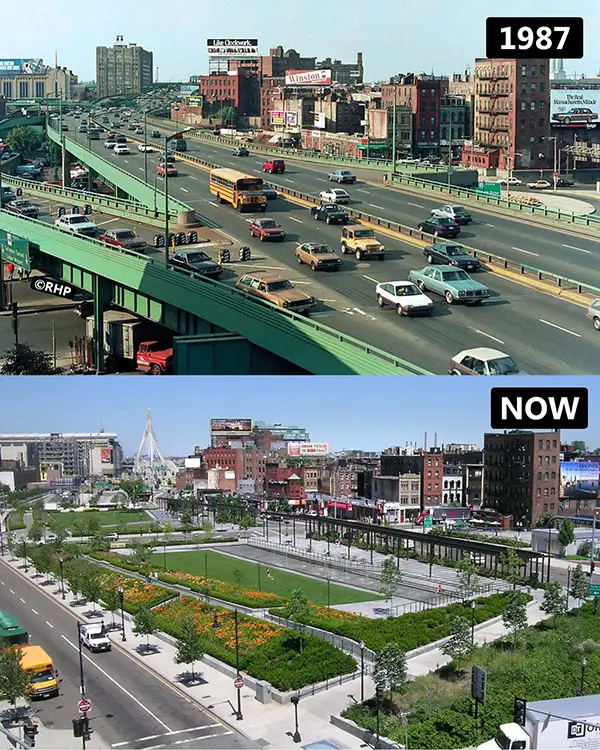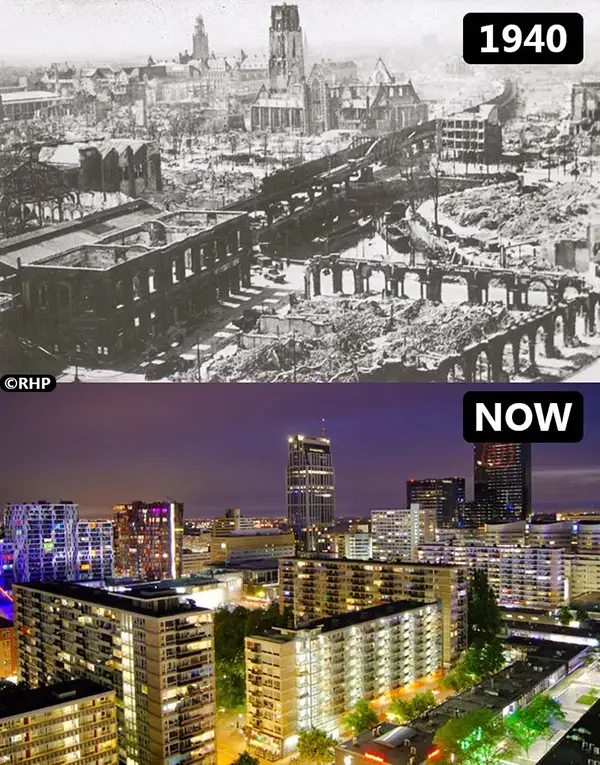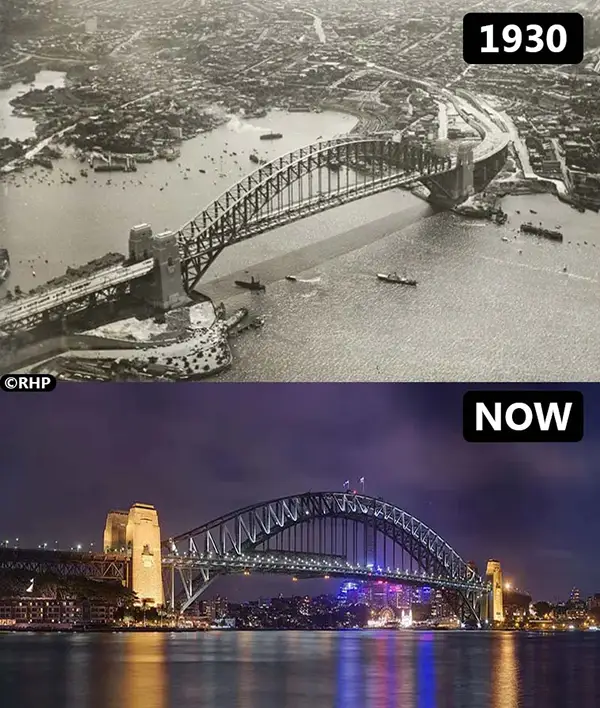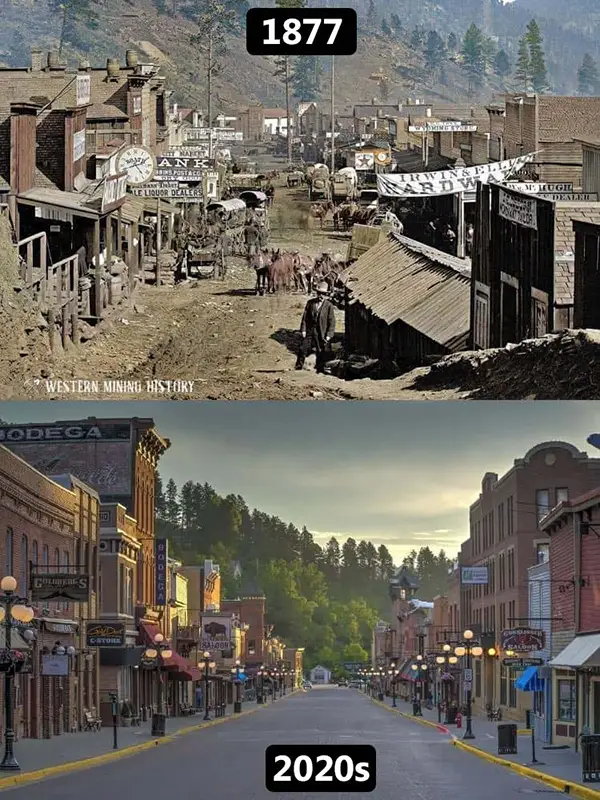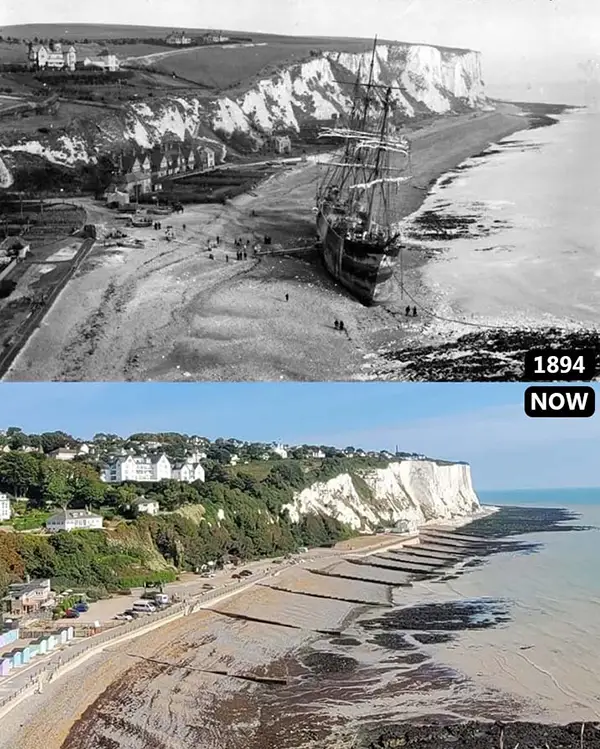Cities do not stay the same. Over decades, streets change, skylines rise higher, and old structures give way to new ones. Then-and-now photos capture these transformations in a way that words alone cannot. They show how spaces once built for horses now hold highways filled with cars, and how narrow lanes have turned into broad roads lined with towers.
Old photographs often show streets that were calm and uncluttered. Trees lined the edges, and pedestrians shared space with carts or early automobiles. Buildings were shorter, with ornate details carved into stone. Streetlights were rare, and power lines crossed above open spaces. People dressed formally for even simple walks, and traffic signals had not yet become part of the urban landscape.
Modern photos reveal a different world. Wide avenues replace cobblestone streets, and glass-covered skyscrapers dominate the horizon. Billboards glow with bright colors, and the pace of life appears faster. Vehicles fill every lane, and public transport systems stretch across underground tunnels and elevated tracks. In some places, only a single landmark remains as a link between the two photos—a church, a monument, or a bridge holding its original design among modern surroundings.
These comparisons also show changes in how people use public spaces. Old photos capture open squares where markets, festivals, and public speeches once took place. Today, those same squares might hold shopping centers, office towers, or paved plazas with digital screens. Where horse-drawn wagons once stood, bike lanes or ride-share vehicles now dominate.
Architectural details tell another story. Early buildings favored heavy stone and intricate decorations, while modern structures rely on steel frames and sleek glass panels. Then-and-now images make these differences clear, often from the same angle, decades apart. They show progress and expansion, but also the layers of history within a single block.


